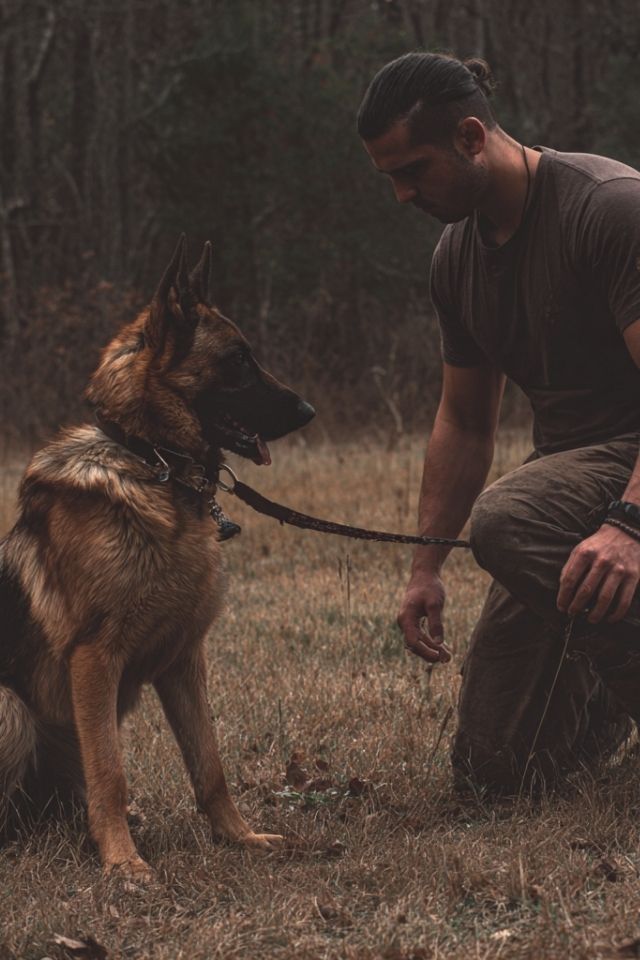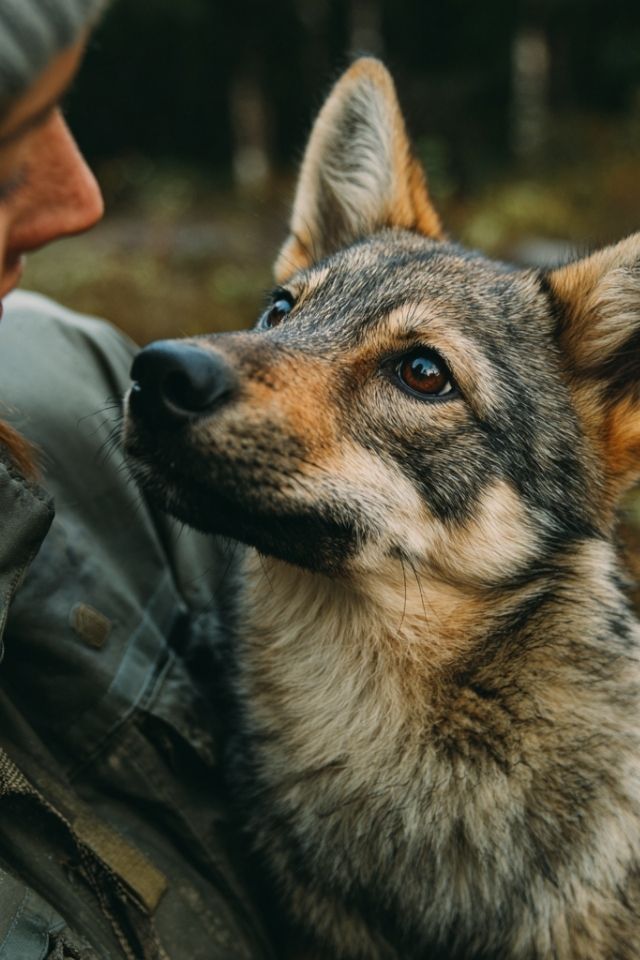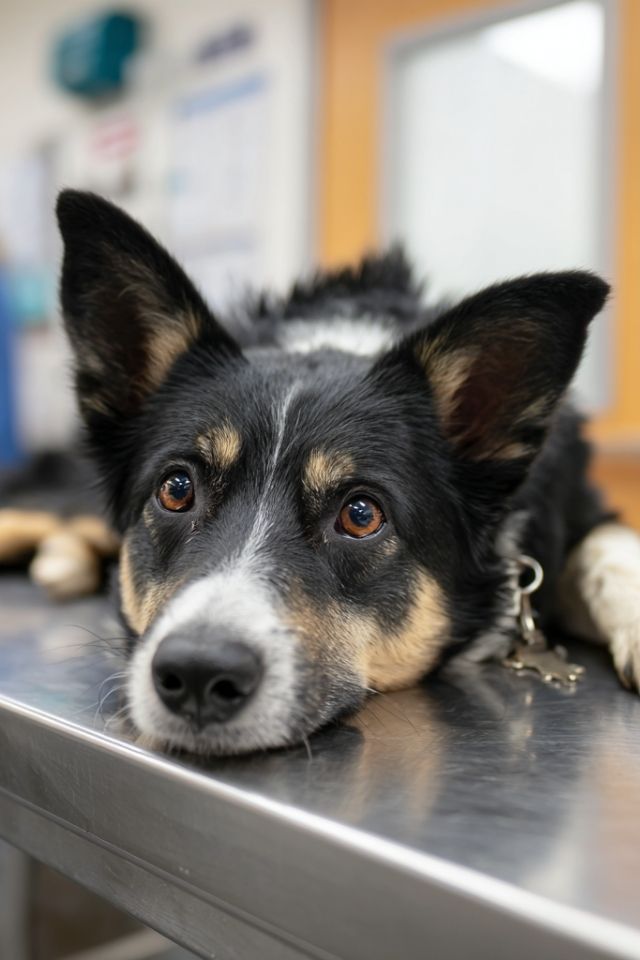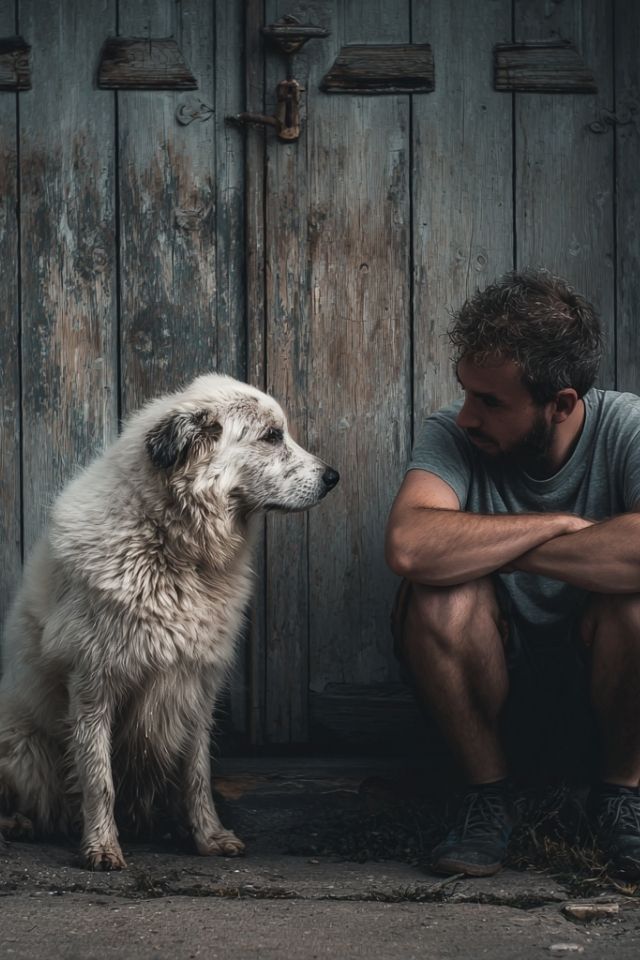The First Recognition
Picture this: It’s 3 AM, and your Border Collie stands trembling at your bedside, eyes dilated in the darkness, staring at shadows that dance where moonlight meets curtain. She’s been awake for hours—you can tell by the worn path in the carpet where she’s been pacing. This isn’t the first night, won’t be the last. Your brilliant, athletic companion—the one who learns new tricks in minutes, who moves through agility courses like water through a riverbed—cannot find her off switch.
You’re witnessing something profound: exceptional drive transforming into its own prison.
I remember the first time I truly understood what over-motivation looked like. A client’s Malinois, Zeus, had just completed his third fetch session of the morning. His owner, exhausted, thought surely now he would rest. Instead, Zeus stood vibrating at the door, pupils black as midnight, sides heaving not from tiredness but from an arousal that had nowhere left to go. The ball wasn’t enough. Would never be enough. In that moment, I saw not a disobedient dog, but a soul trapped in the perpetual motion of its own magnificent drive.
This is the paradox that thousands of working breed guardians face: the very trait that makes these dogs extraordinary—their bottomless well of motivation—becomes the source of mutual suffering when it has no meaningful outlet.
The Symphony of Chemicals
When the Brain Becomes Its Own Storm
Deep within your dog’s neural pathways, an orchestra plays without a conductor. Dopamine surges like violin strings pulled too tight, norepinephrine crashes through like timpani that won’t stop rolling, and serotonin—that gentle flute meant to soothe—barely whispers above the chaos.
Let me tell you about the moment this became real for me. I was observing a German Shepherd named Sasha during what should have been a routine training session. As her handler reached for the toy, I watched her pupils dilate before he’d even moved. Her brain had already fired the reward sequence, flooding her system with anticipation chemicals. By the time the toy appeared, she was so neurologically activated that she couldn’t even grip it properly—her jaw chattering with overflow energy, her body trying to process more stimulation than her nervous system could handle.
This is what’s happening in your restless companion’s mind: Their locus coeruleus—imagine it as the brain’s alarm center—never quite turns off. It’s like living with a smoke detector that triggers at the memory of fire. Every rustle becomes significant, every movement demands investigation, every moment holds the potential for something that never quite materializes.
The transition from healthy enthusiasm to destructive anxiety doesn’t announce itself with fanfare. It creeps in like fog at dawn. First, your dog takes the ball from your hand a little too quickly. Then they’re snatching at it before you’ve released it. Soon, they’re screaming at the sight of the closet where you keep it, their arousal climbing a ladder that has no top rung.
The Tipping Point
Watch closely, and you’ll see the moment your dog crosses from motivated to overwhelmed. Their breathing changes first—not the satisfied panting of exertion, but shallow, rapid respirations that never quite fill their lungs. Their eyes lose focus, scanning constantly but seeing nothing. They might begin to whine, a high-pitched sound that seems to come from their bones rather than their throat.
I’ve sat with owners as they discovered this threshold for the first time, watching recognition dawn on their faces: Oh, this isn’t excitement anymore. This is distress.
Reading the Desperate Signals
The Language of Overflow
Your over-motivated dog speaks to you through destruction, but not in the way you might think. That shredded cushion isn’t rebellion—it’s a story written in foam and fabric about a mind seeking resolution. Each torn piece represents an attempt to complete a behavioral sequence that your living room can’t satisfy.
I once worked with a Jack Russell named Pepper who methodically destroyed one specific corner of every pillow in the house. Her owner saw defiance. I saw a terrier trying to complete an ancient hunting sequence—grab, shake, “kill”—with the only prey available. Pepper wasn’t bad. She was a hunter living in a world without quarry, her genetic programming firing into empty space.
The distinction between boredom and over-motivation lives in the body. A bored dog sleeps deeply and wakes ready to engage. An over-motivated dog sleeps like a soldier in a war zone—never fully surrendering to rest, startling at nothing, always ready for the action that never comes. They exist in what we might call a state of Perpetual Readiness—their own personal NeuroBond formed not with you, but with the possibility of stimulation itself.
Patterns in the Chaos
Consider the Border Collie who chases shadows with the intensity her ancestors reserved for sheep. She’s not playing—she’s desperately trying to control something, anything, in a world where her profound need to organize movement finds no satisfaction. The shadows never respond correctly, never group or settle, never provide the resolution her brain craves. So she tries harder, longer, with increasing desperation.
Or the Malinois who patrols the fence line with military precision, wearing a track in the earth. Each pass increases rather than decreases his agitation. He’s not guarding anymore—he’s caught in a loop where the behavior has become its own trigger, each patrol demanding the next, his stress climbing with every circuit.
These aren’t training issues. They’re cries from a nervous system that doesn’t know how to power down.
The Heritage Written in DNA
Ancient Purposes in Modern Lives
Your high-drive dog carries within them thousands of years of selective breeding, each generation refined for intensity, stamina, and unshakeable focus. The sheepdog in your suburban home was designed to hold the attention of an entire flock for twelve hours straight. The terrier on your couch was crafted to pursue prey through underground darkness without hesitation. These aren’t just behaviors—they’re identity.
I think of a client’s Australian Cattle Dog, Blue, who lived in a Manhattan apartment. Every evening at 5 PM, he would begin what his owner called “the ritual”—a complex sequence of stalking furniture, “herding” shoes into piles, and nipping at invisible heels. Blue wasn’t misbehaving. He was experiencing a kind of genetic homesickness, his DNA calling for work that didn’t exist in his world.
This is the profound disconnect of modern dog ownership: We’ve invited into our homes creatures designed for purposes our lifestyle can’t fulfill. It’s like asking a concert pianist to express their gift through mime—the impulse remains, but the outlet is lost.
Individual Storms
Not every Border Collie becomes obsessive, just as not every Lab remains mellow. I’ve known working-line dogs who could switch off like closing a book, and show-line dogs who vibrated with intensity from dawn to dusk. The difference often lies not just in breeding, but in those crucial early weeks when the brain was still deciding how to wire itself.
The puppy who experienced chaos—too much stimulation, moved too early, mother too stressed—often becomes the dog who can’t find calm. Their baseline arousal was set high before they ever had a choice, their nervous system calibrated for danger that may no longer exist but still echoes in their cells.
The Human Factor
How We Fan the Flames
We contribute to our dogs’ over-arousal in ways so subtle we don’t even notice. That excited greeting when you come home—your high-pitched voice, quick movements, immediate engagement—it’s like throwing gasoline on a fire that was just beginning to bank.
I watched an owner once, trying so hard to tire out her Vizsla. Ball after ball after ball, thinking surely exhaustion would bring peace. But each throw flooded her dog’s brain with dopamine, creating an addiction cycle where more was never enough. She was building an athlete who could never be satisfied, strengthening the very arousal system she was trying to quiet.
Physical exercise without mental resolution is like running on a treadmill in your dreams—motion without arrival, effort without completion.
The Weekend Warrior Syndrome
Then there’s the pattern I see repeatedly: minimal interaction during the work week, followed by marathon weekend adventures attempting to “make up” for lost time. Your dog’s arousal system can’t process these peaks and valleys. They exist in a state of either desperate waiting or overwhelming stimulation, never finding the middle ground where real life happens.
The modern dog’s dilemma is this: They live in our time-scarce world but operate on biological rhythms that know nothing of workdays and weekends. Their needs are constant; our availability is fragmented. In this gap, over-motivation flourishes.
The Path to Peace
Building the Invisible Leash of Self-Control
True impulse control isn’t about suppression—it’s about creating space between stimulus and response where choice can exist. It’s teaching your dog to find what I call the Sacred Pause, that moment where their thinking brain can catch up with their reactive brain.
Start with permission-based living, but understand what you’re really building: You’re strengthening neural pathways that compete with the impulse highways. Each time your dog waits for eye contact before eating, they’re practicing the neurology of restraint. Each threshold they pause at builds their capacity to resist the surge of “go” chemicals.
I once worked with a Dutch Shepherd who couldn’t even see his food bowl without launching into hyperactive spirals. We began with one second—just one second of stillness before his meal. It took three days to achieve that single second reliably. But in that second lived the seed of transformation. Six months later, this same dog could hold a down-stay while dinner was prepared, his ability to exist in the space between wanting and having finally developed.
The Art of Environmental Design
Your home must become a sanctuary that supports regulation. Create what I think of as Zones of Being—spaces that communicate different energy states through their very existence.
The calm zone isn’t just a bed in a quiet room. It’s a carefully crafted environment where every element whispers “rest.” Dim lighting that tells the nervous system danger has passed. Soft textures that invite settling. Perhaps lavender in the air, or the gentle rhythm of classical music. This is where your dog learns that not-doing is safe.
The activity zone holds different energy—bright, engaging, with clear boundaries. Here, arousal has permission to rise, but always with the understanding that what goes up must come down. Every session ends with a Return Protocol—a structured descent from activation to calm that teaches your dog’s nervous system how to find its way home.
The Long Journey
Learning the Rhythm of Decompression
Living with an over-motivated dog means becoming fluent in the language of arousal states. You learn to read the pre-escalation signals—the slight tension in the shoulders, the breathing that shifts from rhythmic to shallow, the gaze that stops seeing and starts scanning.
You develop rituals. The morning doesn’t begin with excitement but with what I call Gentle Awakening—five minutes of simply existing together before the day’s energy enters. Walks become opportunities for what we might term Mindful Wandering, where sniffing and exploring matter more than distance covered. Evening brings the Settling Sequence, a predictable series of increasingly calm activities that guide your dog toward rest.
Frustration as Teacher
Your over-motivated dog must learn that wanting doesn’t always lead to having, that arousal doesn’t always find resolution. This isn’t cruelty—it’s preparation for a world that can’t always meet their intensity.
Begin with micro-frustrations. The treat that requires two seconds of waiting instead of one. The door that opens only when they step back rather than push forward. The toy that “sleeps” when play becomes frantic. You’re teaching what I call Emotional Flexibility—the ability to bend without breaking when desires meet reality’s boundaries.
Recognition and Hope
When Health Meets Dysfunction
Healthy drive looks like your dog’s eyes lighting up at the appearance of their leash, working with focused intensity during training, then curling into satisfied sleep afterward. It’s the Border Collie who stalks and gathers with precision but knows when the game ends. It’s the Malinois who switches from protection work to gentle play with children, each behavior contained and complete.
Dysfunction appears when the switch breaks—when “on” becomes the only setting. The dog who destroys toys not in play but in frustration. Who can’t sleep despite exhaustion. Whose eyes never soften, whose muscles never fully release. This is when drive stops serving life and starts consuming it.
The Transformation Possible
I want to tell you about hope. About the German Shepherd who went from destroying three crates to choosing her calm mat when stressed. About the Jack Russell who learned to bring a toy when frustrated instead of attacking ankles. About the Border Collie who discovered that watching clouds could be as satisfying as chasing shadows, once her brain learned to process stillness.
These transformations don’t happen overnight. They unfold in moments so small you might miss them: The first time your dog chooses to disengage from a trigger. The morning they sleep past sunrise. The walk where they actually sniffed instead of scanned. These moments accumulate like snow, each one building on the last until suddenly the landscape has changed.
Your Journey Forward
The Questions That Matter
Before we part, ask yourself not “Can I manage this dog?” but rather “Am I ready to be transformed by this journey?” Because living with an over-motivated dog will change you. You’ll develop patience you didn’t know existed. You’ll learn to see behavior as communication, intensity as intelligence misdirected, and challenges as invitations to grow together.
You’ll become someone who celebrates a successful three-minute settle with the joy others reserve for championships. Who sees profound victory in a dog choosing rest. Who understands that sometimes the greatest training achievement is doing nothing at all, together.
The Invitation to Depth
Your over-motivated dog offers you something rare: an invitation into a relationship that demands your full presence. They cannot be owned casually, cannot thrive on autopilot. They require you to show up, consistently and consciously, to meet them where they are while guiding them toward where they need to be.
In return, they offer loyalty that borders on devotion, intelligence that astounds, and a partnership that transforms both ends of the leash. They teach us that intensity isn’t wrong—it simply needs direction. That drive isn’t excessive—it just needs appropriate channels. That what seems like too much might actually be exactly enough, once we learn to work with it rather than against it.
The Final Truth
Your over-motivated dog isn’t broken. They’re not defiant, or difficult, or too much. They’re a finely tuned instrument playing at a frequency most of us can’t hear, responding to signals we don’t recognize, trying to complete patterns we’ve forgotten existed.
They need us to remember that before they were pets, they were partners. Before they were companions, they were workers. Their DNA remembers even when we forget.
The question isn’t whether you can exhaust them—you can’t. It’s whether you can help them find peace within their intensity, satisfaction within their drive, and rest within their remarkable capacity for more.
This is the journey of living with lightning in a bottle, of sharing your home with controlled wildfire, of loving a creature whose motor idles higher than most dogs’ maximum. It’s not easy. But for those who accept the challenge, who learn to dance with the intensity rather than fight it, who discover the profound bond possible when you truly understand your dog’s deepest needs—for these brave souls, there’s no other way they’d want to live.
Welcome to the transformation. Your over-motivated dog is about to teach you everything you never knew you needed to learn about patience, presence, and the profound beauty of a nervous system finally finding its way home to calm.






